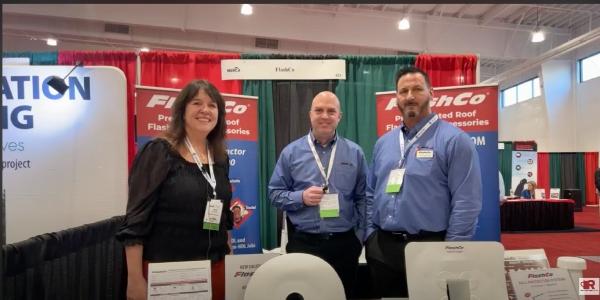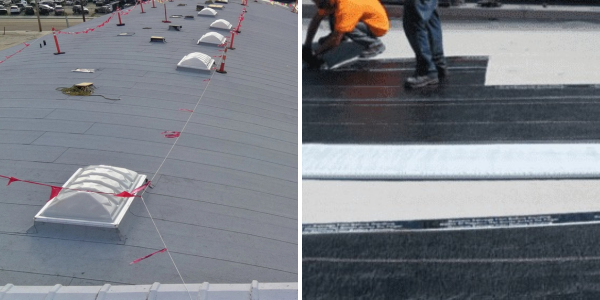The foundation of product excellence

By Dawn Killough, GAF.
Understand the critical role building codes and standards play in guiding innovation and learn how GAF adheres to these benchmarks to ensure its products meet or exceed the rigorous demands of local and national requirements.
Building codes are in place to provide guidance on how to ensure safe, reliable and high-performing construction. These standards have been created to protect people and property by mitigating risks such as fire, structural failures and storm damage. For GAF, these codes become a consideration at the product development stage so that contractors can feel confident they are providing protection no matter where the installation occurs.
Jeremiah Hershberger, GAF product manager of residential accessories, recently discussed the role codes and standards play in residential roofing product development, specifically concerning roof vent code requirements.
Why are product codes and standards important?
The main purpose of building codes and standards is to maintain public health, safety and welfare in all structures. They do this by ensuring that buildings are constructed in such a way as to minimize potential hazards, like fire, structural failure or storm damage.
Building codes exist to improve the safety and livability of buildings. They set minimum requirements for the materials and systems installed, as well as their installation methods. In the U.S., building codes are upheld and enforced by state, county and city governments through the permitting and inspection processes.
Standards also provide minimum design and performance metrics for products and systems. However, unlike local building codes, they are often universally upheld (nationally or worldwide). Organizations like ASTM International and the National Fire Protection Association are responsible for creating, updating and communicating these standards. Local building codes often use these standards to set minimums for product and installation quality.
How do roofing codes and standards affect product development?
"The goal of product development at GAF is to provide enhanced value for our customers and contractors," Jeremiah explains. Ultimately, customers need to be confident in the performance of GAF products and building codes and standards provide a minimum threshold for product performance. Accordingly, they must be taken into consideration when designing products.
Codes are prescriptive performance requirements for buildings. They include both the materials used to construct the building and how they're installed. All products used in a particular building must meet the local code requirements for that county or city.
Standards are used as a base of comparison. Types of standards include:
- Testing standards that define methods and minimum acceptable results
- Rating standards that provide a way to fairly compare products
- Design standards that set the criteria for specific roof system designs
When products are developed for use in many geographic areas, they must meet several locations' requirements. For instance, when developing a new off-ridge ventilation product, GAF considers not only how much net free area (NFA) the unit will have, but also the performance characteristics required to meet Florida Building Code, Texas Department of Insurance (TDI) and Miami-Dade standards so the product can be used in areas that adhere to those codes.
Why does GAF pay attention to codes and requirements?
"We want our customers to be confident in the performance of our products not based solely on our word but also on the basis of third-party standards that level set the industry," notes Jeremiah. "Codes and testing requirements provide customers with that outside assurance that our products will hold up to the environmental rigors of a specific region or location."
For example, TAS-100(A) tests a product's performance in wind-driven rain. The test provides information on how well a ventilation product will perform in such an environment and helps the product development team learn how likely it is that a ventilation product might leak, so we can then mitigate that risk.
How do codes affect product quality?
Codes may specify what raw materials can be used to make a product or how it will perform in certain standardized tests. For instance, ASTM E108 or ANSI/UL790 Class A roofing fire ratings require a high degree of fire protection to the roof deck, which directly affects the materials used to produce these products. Similarly, the UL 2218 Class 4 impact test or the ASTM E330 Uplift Pressure Test show how a product performs under naturally occurring forces (e.g., hail or wind).
"GAF strives to find the balance between performance, strength and ease of installation (or handleability)," Jeremiah says. "This often leads us to develop products that use higher grade materials (better performance over time), are simpler to manufacture with fewer points of potential failure and are easier to install correctly (ensuring repeatability)."
How codes affect the development of high-quality roof vents
Creating high-quality roof vents and rooftop accessories didn't occur by accident. The GAF development team focuses on roofing codes and requirements through an intentional design process to drive innovation. From product ideation to design, development and launch, the team ensures products meet or exceed several codes and standards, including:
Florida building code
Sets minimum performance standards for roof construction, such as wind resistance, fire performance and roof ventilation requirements. Products must be approved by the state before being installed.
Miami-Dade County
This county in Florida has some of the strictest building codes in the country due to its classification as a High-Velocity Hurricane Zone. Products used there must also be approved by the county as meeting not only Florida Building Code, but the stricter county requirements.
Texas Department of Insurance (TDI)
Regulates insurance companies and the insurance/claims process in the state of Texas. Roofing products are evaluated based on TDI-adopted building specifications regarding products used and installation methods.
Other tests performed to ensure product performance include:
- TAS-100(A). Determines the water infiltration resistance of a ridge area ventilation system (ridge vents, static vents, turbines, or powered vents).
- Simulated snow/ice dam. Ice dams can form when a roof is not properly ventilated, leading to snow melting and refreezing along the lower edge of the roof.
- UL2218 Class 4 impact test. The UL2218 test is a steel ball drop test that evaluates the impact resistance of roof coverings. Class 4 products are shown to withstand the 20-foot drop of a two-inch diameter steel ball without cracking through significant damage.
Ensuring roofing products are up to the task
The product team at GAF routinely performs these tests to ensure roofing materials meet local roofing code requirements. The company then makes the results publicly available, helping customers nationwide rest assured that they can rely on GAF roofing products to perform as expected.
For more information on the GAF ventilation products that meet or exceed code requirements, explore the ridge and off-ridge ventilation offerings.
Original article and photo source: GAF
Learn more about GAF in their Coffee Shops Directory or visit www.GAF.com.























Comments
Leave a Reply
Have an account? Login to leave a comment!
Sign In